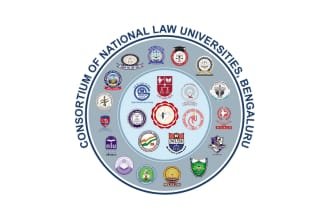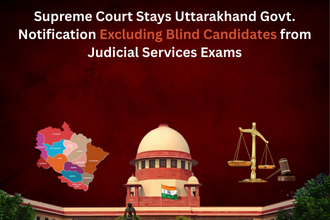In a significant development that could reshape the future of legal education in India, the Supreme Court on May 7, 2025, decided to revive and suo motu pursue a long-pending public interest petition filed by late Professor Shamnad Basheer in 2015, seeking the formation of a permanent body to conduct the Common Law Admission Test (CLAT).
The Court’s move comes amid widespread criticism over the conduct of the CLAT-UG 2025 exam by the Consortium of National Law Universities (NLUs), particularly with regard to errors in the question paper, and lack of uniformity, accountability, and transparency.
Background: CLAT and Its Controversies
The Common Law Admission Test (CLAT) is the centralized entrance examination for admissions to prestigious National Law Universities (NLUs) across India. However, since its inception in 2008, CLAT has been marred by recurring issues—ranging from question paper errors, infrastructure failures, logistical confusion, and last-minute changes.
In response to this persistent instability, Prof. Shamnad Basheer, a renowned legal academic and policy advocate, filed Writ Petition (Civil) No. 600/2015, urging the Supreme Court to set up a structured and institutionalized mechanism for conducting CLAT—similar to the National Testing Agency (NTA) that handles exams like NEET and JEE.
Why Is the 2015 Shamnad Basheer Petition Relevant Today?
Prof. Basheer had pointed out that the rotational conduct of CLAT by different NLUs each year led to inconsistencies, arbitrariness, and poor quality control. His petition argued that such a critical national-level exam needed professional oversight, standardization, and legal accountability.
Although Prof. Basheer passed away in 2019, the Supreme Court on May 7, 2025, decided to revive his plea suo motu, noting that the issues raised in the 2015 petition remain unresolved. The Court has now issued notices to the Union of India, Bar Council of India (BCI), and the Consortium of NLUs, asking why no permanent body has been constituted till date.
CLAT-UG 2025: The Immediate Trigger
The Supreme Court bench comprising Justice BR Gavai and Justice AG Masih was hearing petitions challenging the CLAT-UG 2025 results. The exam, conducted in December 2024, faced backlash due to multiple errors in the question paper.
The bench was visibly distressed by the “casual manner” in which the Consortium conducted the exam. Justice Gavai questioned:
“Which Vice-Chancellors are framing these questions? Why don’t you have a permanent mechanism? Why can’t there be a system like NEET or JEE?”
Such observations reflect deep concern about the credibility and fairness of the current CLAT administration model.
2018 SC Judgment Already Highlighted the Problem
Senior Advocate Gopal Sankaranarayanan, appearing for the petitioners, reminded the Court of a 2018 judgment in which the Supreme Court had directed the Union Government to constitute a committee to examine the feasibility of a permanent CLAT body.
That 2018 order had observed:
“The idea of entrusting the task of conducting CLAT to different Law Universities every year needs to be re-visited… A permanent structure must be considered after consulting stakeholders like the Bar Council of India.”
However, no action was taken by the Union Government or BCI in the past seven years, prompting the Court to issue fresh notices in the 2025 hearing.
What Prof. Shamnad Basheer Had Proposed
In his petition, Prof. Basheer raised the following core concerns:
- Sub-standard and arbitrary question papers with factual and legal inaccuracies.
- Wrongful seat allocations due to flawed merit lists.
- Opaque administrative processes with no RTI compliance.
- Inadequate grievance redressal mechanisms for students.
- The absence of a long-term institutional framework to oversee CLAT.
He proposed the establishment of a robust, centralized testing agency—independent of the NLUs—that would ensure transparency, professionalism, and consistency.
The Case for a Permanent CLAT Body
1. Standardization and Quality Control
A permanent body would ensure that question papers are drafted, reviewed, and vetted by subject experts, minimizing errors.
2. Transparency and RTI Compliance
Unlike the ad hoc nature of the Consortium, a statutory body would be subject to accountability laws, including the Right to Information Act, ensuring better access for candidates.
3. Grievance Redressal
Candidates would have a dedicated forum to raise disputes, ensuring timely and impartial resolution of complaints.
4. Reduced Litigation
A consistent and professional approach would reduce the number of CLAT-related legal challenges, which have become an annual affair in High Courts and the Supreme Court.
5. Equal Opportunity
Errors and inconsistencies disproportionately affect students from non-metro areas who lack access to expensive coaching or legal support. A permanent body would level the playing field.
What’s Next?
The Supreme Court has now taken up Prof. Shamnad Basheer’s 2015 PIL suo motu, indicating its intent to actively monitor the creation of a permanent CLAT body. The Union Government and the Bar Council of India are expected to file responses.
The next steps could include:
- Constitution of an expert committee to evaluate the feasibility of a permanent CLAT body.
- Framing of guidelines or a statutory framework for such a body.
- Deliberation on the role of the NLU Consortium and whether it should continue as a governing or advisory body.
Conclusion
The Supreme Court’s revival of the 2015 Shamnad Basheer PIL marks a pivotal moment in India’s legal education landscape. With the credibility of the CLAT-UG 2025 exam under scrutiny, the demand for a permanent, transparent, and accountable examination authority has gained renewed legitimacy.
This judicial intervention could lead to a long-overdue reform, ensuring that law aspirants across India get a fair, reliable, and professionally conducted entrance exam—paving the way for a more just and equitable legal system.



